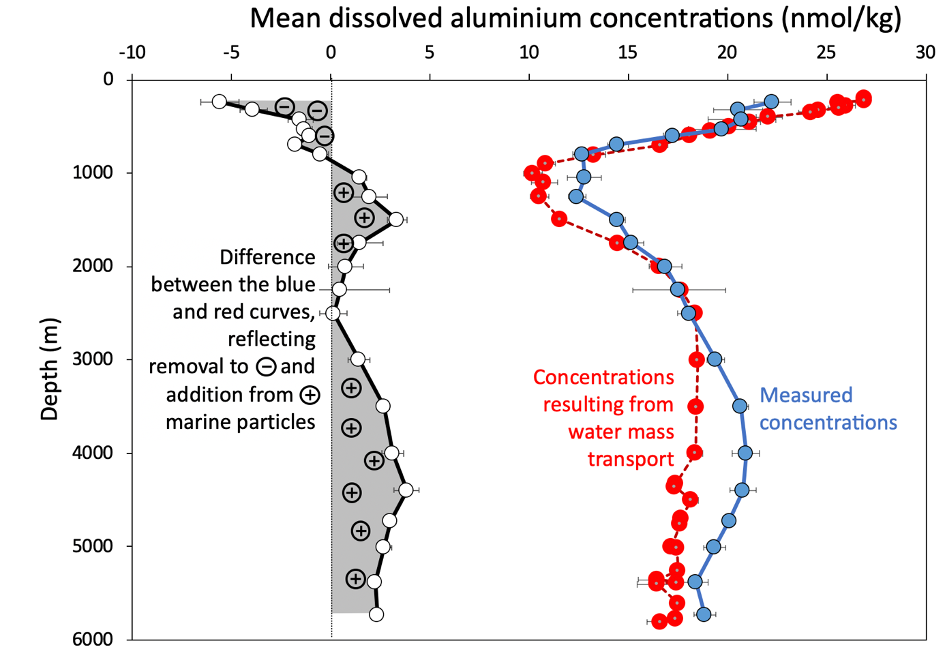When lateral advective transport explains between 80 and 100% of the dissolved aluminium distribution
Artigue and colleagues (2021, see reference below) present new dissolved aluminum (dAl) data from the 2017 GEOTRACES process study GApr08 along 22°N in the subtropical North Atlantic Ocean. The originality of this study is that the authors used a model that does not neglect advection in the surface, and the results of an optimum multiparameter analysis below 200 m to separate the component of the dAl signal derived from water mass transport from its biogeochemical component. Thanks to this approach Artigue and co-authors have shown that while the dAl distribution is usually considered to be dominated by atmospheric dust input and removal by particle scavenging, water mass transport plays a major role from the surface to the sea floor and cannot be neglected in this area. At the surface, advection and dust dissolution are equally important dAl sources. Below 200 m, again a major role is played by water mass transport, while dissolved/particle interactions act as a moderate dAl sink from 200 to 1000 m and as a moderate dAl source from 1000 to 5500 m (grey shaded area in the figure below).
Overall, these results evidence that the effect of advection cannot be neglected in areas where a conjunction of significant horizontal dAl gradients and significant horizontal currents is found.

Reference:
Artigue, L., Wyatt, N. J., Lacan, F., Mahaffey, C., & Lohan, M. C. (2021). The importance of water mass transport and dissolved‐particle interactions on the aluminum cycle in the subtropical North Atlantic. Global Biogeochemical Cycles, e2020GB006569. https://doi.org/10.1029/2020GB006569
